Lost and Found at Sea: The Extraordinary Story of the Shipwrecked Jeans
Once again, a spectacular artefact drawn from the deepest depths of American history has fallen under the gavel.
Once again, a spectacular artefact drawn from the deepest depths of American history has fallen under the gavel. Just a few months ago, a pair of Levi Strauss riveted overalls from the 1880s (the oldest pair of Levi’s ever to appear in a live auction) sold for $87,400. Now, a pair of pre-Civil War “miner’s pants” were the star attraction in a recent Holabird Western Americana Collections auction. When the gavel fell, they sold for an astonishing $114,000 ($95,000 + $19,000 auction fees). The murky origins of the pair have led to some wild speculation about who made them, when, and for what purpose. We’ll get to the controversy below, but let’s start with the story behind the pair’s discovery. It’s a whale of a tale that makes for riveting reading.
Pulled from the Deep
Those who hunt for nineteenth-century workwear mostly work underground, exploring abandoned mineshafts and work sites in the hopes of finding abandoned jeans and jackets buried in the dust and the rubble. What makes this recent pair so unique is that, rather than waiting to be discovered underground, this pair was hauled up out of the deep. For well over a century, the trousers slept with the fishes on the ocean floor 160 miles off the coast of South Carolina. They were found inside of a trunk that was part of the wreckage of the S.S. Central America. On September 9th, 1857, while steaming its way up the Atlantic seaboard on the last leg of its journey from Panama to New York, the 280-foot side-wheel steamer, with 578 passengers and crew on board, encountered a category two hurricane. During the first part of the storm, the wind and waves battered the ship, damaging the hull and shredding the sails. Attempts to repair the damaged boiler during the calm of the storm were unsuccessful. The paddle wheel and the bilge pumps ground to a halt, effectively sealing the fate of the ship and those still on board.

The Paddle Wheel of the S.S. Central America on the Ocean Floor The bucket brigade of nearly 500 men led by the ship’s heroic captain worked for 30 hours straight passing buckets from hand to hand, but they could not keep up with the rising water. Around 100 passengers (mostly women and children) were hurried into lifeboats that made it safely to a nearby ship, but it was too late for the rest of the passengers and crew. The winds blew the powerless ship miles away from the rescuers. When she finally went down around 8pm on the evening of September 12th, she brought with her 428 souls including the ship’s captain.
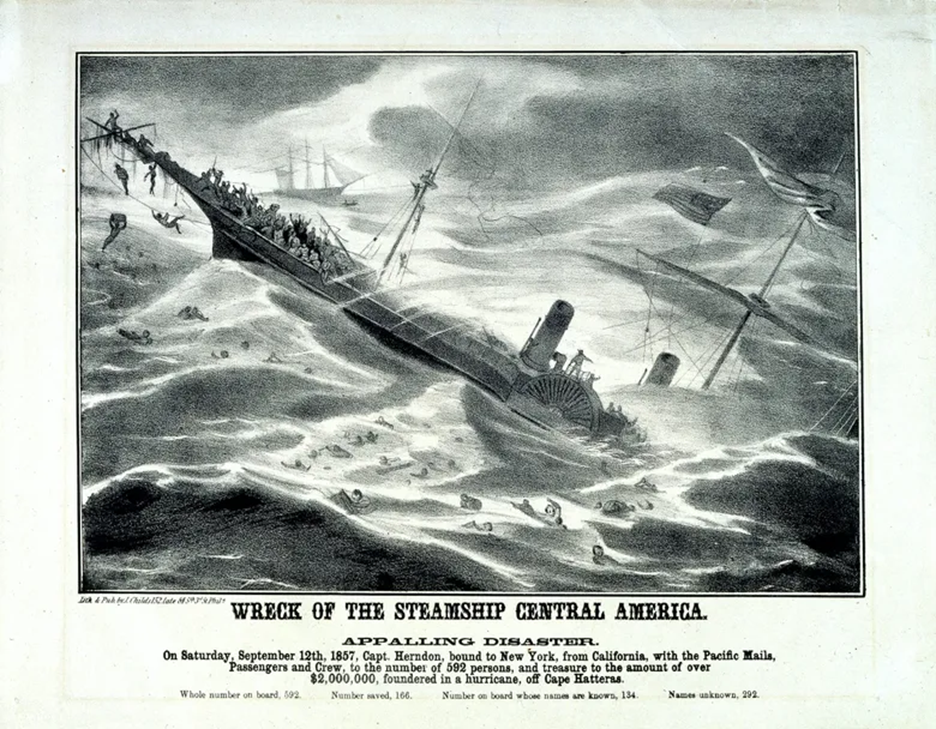
The Wreck of the Steamship Central America It was, at that time, the worst nautical disaster in America’s history. The appalling loss of life made headlines around the world, but what caught the eye of treasure seekers was the cargo that went down with the ship. In the cargo hold were nearly 21,000 pounds of Californian gold in the form of ingots and double eagle $20 gold coins, plus another 10,000 pounds or so of un-minted gold carried by the ship’s passengers. All totalled, the wreck contained gold worth more than $750 million in today’s coin. The ship became something of a white whale for treasure seekers, but after a century of fruitless searches, many assumed that the ship’s treasures would never again see the light of day. In 1988, though, a team of deep-sea explorers located the wreck and began hauling some of its cargo to the surface—starting with the gold, of course.
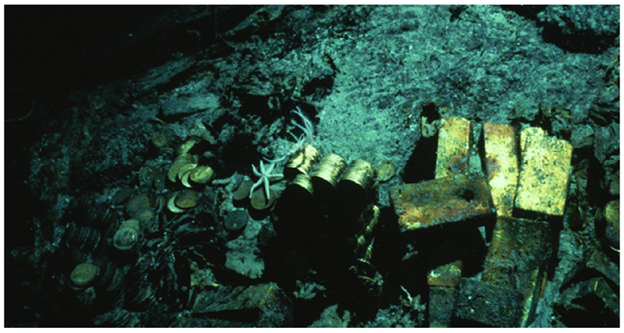
The explorers recovered somewhere between $100 and $150 million worth of gold, including one massive 80-pound ingot worth a staggering $8 million dollars. There were legal challenges, with numerous parties laying claim to the recovered treasure, but in the end, more than 90% of the recovered gold was determined to be the property of the team that discovered it.
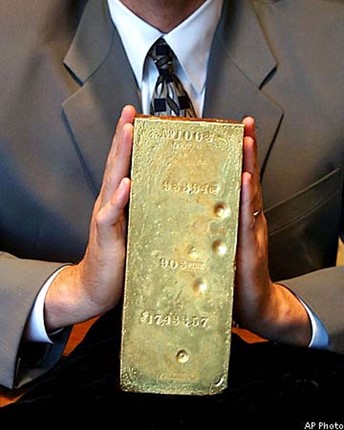
The $8 million ingot
A Lucky Survivor
While the gold captured the lion’s share of the media attention, historians were more interested in the contents of a pair of trunks that were brought to the surface. The one that interests us today (containing the mid-century trousers) belonged to Lieutenant John D. Dement, a hardware merchant from Oregon. Dement was one of the first-class passengers on board the S.S. Central America when it sank. He was one of the lucky ones who was rescued, but his trunk went down with the ship. When it was finally brought to the surface, the intact trunk was a time capsule from a long-distant age. It contained Dement’s dress overcoat complete with a velvet collar, a Brooks Brothers woolen work shirt with the branding still intact, a smoking jacket, dress shirts, an assortment of scarves, collars, and a readable copy of Dumas’s The Count of Monte Cristo with a dog-eared corner marking the place Dement stopped reading. What was most exciting, though, were the button-fly trousers, which some were convinced were an impossibly early pair made or sold by Levi Strauss.
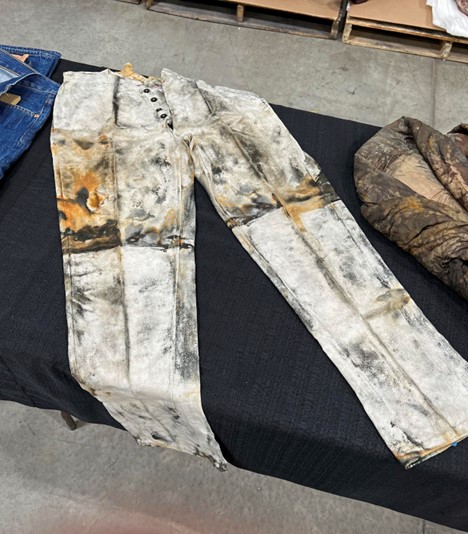
Dement’s Trousers Displayed Next to Modern-Day Levi’s by the Auction House The remarkably well-preserved button-fly trousers are an intriguing puzzle for historians. The Reno auction house that sold the pair called them “miner’s pants,” but it is unlikely that these were made for the working men of the gold rush. The pair’s owner was a well-to-do merchant, and there was nothing else in his trunk to suggest that he cosplayed as a miner in his spare time. The pants do not have suspender buttons or other recognizable features from mid-century American workwear, and they were probably made from a lightweight, white cloth (perhaps canvas) better suited to a man of leisure than one of labour.
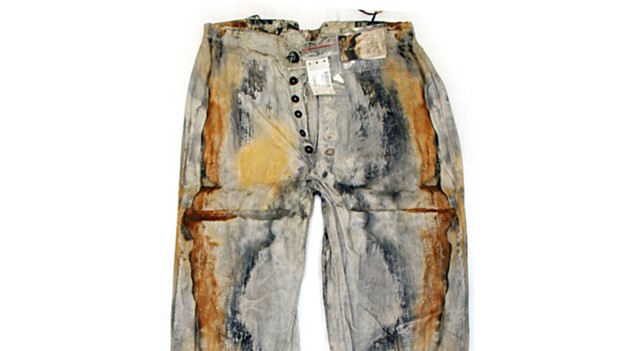
Dement’s Recovered Trousers With no markings or branding of any kind, determining precisely who produced this pair will be virtually impossible (the auctioneers admit this much). There is a fog of uncertainty surrounding the pair, but this hasn’t prevented the auction house from making some extraordinary claims about them.
Are the Dement Trousers Levi’s?
While the intact 19th-century trousers are undeniably significant, there has been a rush to connect them to both the Gold Rush and to America’s best-known maker of jeans. Says Dwight Manley, a managing partner of the Reno auctioning firm, Dement’s trousers “are like the first flag on the moon.” They base this claim on their own research, which they believe suggests that these are the oldest pair of Levi Strauss trousers in existence, making them a find of unprecedented historical significance (and, I might add, tremendous value). They go so far as to claim that there is a 61% chance that the trousers in Dement’s trunk were either sold by or manufactured by Levi Strauss. They base this impossibly precise figure on some unlikely and tenuous claims that, if true, would entirely overwrite the history of America’s most iconic workwear brand.
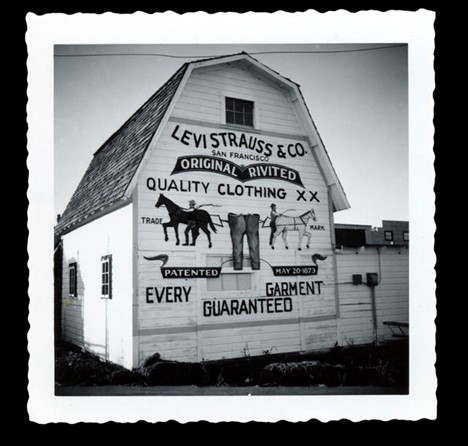
First, they claim that Strauss had established a lucrative manufacturing business in San Francisco by 1857 (16 years before he began manufacturing his patented riveted overalls). They base this on the size and frequency of the company’s gold shipments, which they claim rose sharply in 1857. They also point to a call for hides that Levi Strauss put out in 1856, which they claim proves that Strauss was manufacturing goods—not just wholesaling them. Finally, they claim that both the five-button fly and the type of fasteners used were unique to Levi’s, bewilderingly comparing the fly design on the Dement trousers to “the Levi’s of today”, as though this were a smoking gun.
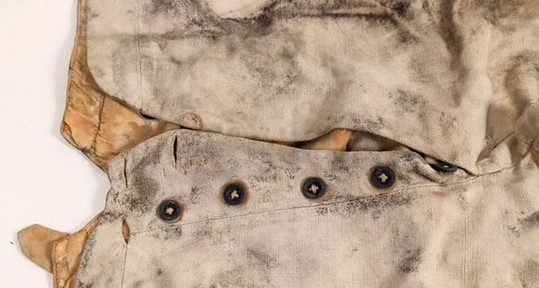
Of course, the Reno-based auction house has a vested interest in connecting the overalls to Levi Strauss. Even the possibility that the pair were tangibly connected with the San Francisco brand and the California Gold Rush caused the value of the pair to skyrocket. During the auction, a second pair of trousers with only four buttons and no stated connection to Levi Strauss sold for only $300. The Levi’s name is as good as gold. The sellers have made a fantastic claim, and this calls for equally fantastic evidence. They don’t produce anything of the kind. Yes, they have done extensive research, but they have made mighty leaps between scanty extant documentation to prove that what they have is not simply an extraordinary artefact—it is an impossibly extraordinary one. I give the last word to Levi Strauss historian Tracey Panek: “There is no primary source evidence to conclude that the Dement trunk pants were made by or linked to Levi Strauss & Co. in any way whatsoever.”
To view full content and a better mobile experience, try



